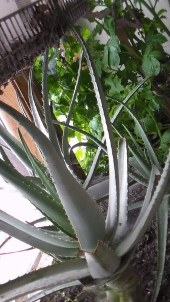
 5
5










 2
2




Some places need to be wild
 2
2








Eric Hanson wrote:Roy,
If you need irrigation, drip irrigation is the way to go. The little sprinkler emitters are a close second. The beauty of drip irrigation is that it is so efficient with its water use. My favorite watering system is from dripworks.com. They are located in California, near the Bay Area. I don’t know what shipping can be done at the moment, but they are affordable and very high quality.
I personally love to use a drip line with .5 gallons/hour output. This is a nice, slow water release into my clay soil and I find that 1-2 hours can give me 1-2 weeks worth of water.
Nice job using the old hosing. That was a clever idea.
Eric
 2
2














 2
2




Some places need to be wild
 1
1








bruce Fine wrote:ive been using drip in a few forms for quite a while. if I can make couple suggestions ---- you will want to how many balance emitters in hose run to volume and pressure from your source, ive divided garden into sections because volume and pressure is not enough to do all at once also you will want to put a filter or flushable fine mesh screen just after the valve from your water source. it only takes tiny particles to plug up most emitters.
i'e gotten a lot of my stuff from these folks and they have lots of good info in printed catalog, that's how long its been, iim guessing online is about the same as what they put in printed stuff years ago
https://www.rainfloirrigation.com
 1
1




Annie Collins wrote:Can any/all of you above, Roy, Eric, Bruce, give me your opinion as to if you thought drip irrigation will work with a 330 gallon water tote that is about 3 feet above the ground to bring water to about a 50 x 70 foot garden? Do you think there will enough pressure to push the water through the hose or drip hose?










 3
3




Some places need to be wild
 2
2




Roy Long wrote:
Bigger emitters will offset low pressure, the higher the gpm rating the lower the pressure needed to flow. You won't get the rated gpm but you can offset a lack of pressure that way. Depending on where you are a 350 gallon tank isn't going to do much for water on a 3,500 square foot garden... That would be one gallon per every ten square feet, one watering would empty the tank. Soaker hoses could also be used for very low pressure systems, in fact many systems have to run pressure reducers which would not be an issue for you.
How is this 350 gallon tank refilled exactly?
 2
2




Eric Hanson wrote:Annie,
The problem in your case is going to be pressure. Each 2.3 feet gives you 1 psi. My drip emitters need a minimum of 10 psi if I remember correctly. Unfortunately your 3 feet is just not enough for what is called a pressure compensating emitter which gives off an EXACT amount of water over a very wide range of pressures. This is nice because a single line can run up and down hill and the first and last emitter and every one in between give off the same amount of water.
There are zero pressure emitters, but you can only run about 20 feet or so before the emitters start to give off different amounts of water. It still can be done, but it makes things a little more complex.
But Annie, if that is the water you have on hand, and if you want to try drip irrigation, then by all means do so. The company I recommend is Dripworks.com. They have a great selection of drip products at reasonable prices.
Good Luck and please let us know how things work out!
Eric
 2
2




Roy Long wrote:Being able to now use for drip irrigation just makes it that much more useful, though at this point I am just about out of old junk garden hose material...
Pecan Media: food forestry and forest garden ebooks
Now available: The Native Persimmon (centennial edition)
 2
2





|
You ought to ventilate your mind and let the cobwebs out of it. Use this cup to catch the tiny ads:
Freaky Cheap Heat - 2 hour movie - HD streaming
https://permies.com/wiki/238453/Freaky-Cheap-Heat-hour-movie
|







